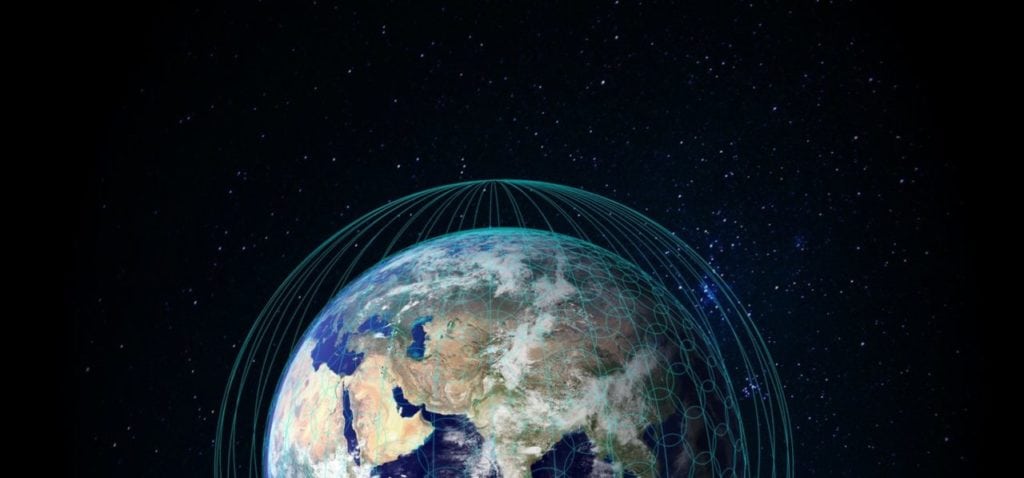NSR Analyst Answers Key LEO Questions

Photo: OneWeb
At SATELLITE 2019, one of the hot topics will likely be the future of Low Earth Orbit (LEO) satellite systems. But, many questions remain. With this potentially huge influx of capacity coming to market, which companies will be the buyers for this capacity? We talk to one of the top analysts in the sector, NSR Research Director Claude Rousseau, about the key questions facing this new era of satellite communications.
When asked about new satellite capacity buyers, hename checks consumer broadband, enterprise Very Small Aperature Terminal (VSAT), and fixed VSATs as three verticals where he believes LEO capacity can make a difference. “Enterprise within the following vertical/segments: oil and gas, mining, utilities, transportation, green energy, government and military organizations,” he said. “These are high-value, high disposable income verticals that represent inelastic demand buying patterns. If LEOs or for that matter, any satellite solution is to generate consumer-oriented revenue streams, Total Cost of Ownership (TCO), affordable service, and equipment costs need to be an integral part of the offering. Basically, demand elasticity has to be part of the equation to enlarge the addressable market,”
Rousseau believes the differentiating attributes for LEO systems are polar coverage and latency. He says latency can unlock new use cases like high frequency trading, real-time remote command and control, remote automated operations (for mining), or cloud services. “Better polar coverage can be leveraged for some mobility routes that may cross the poles,” he added. “But it is also an opportunity for the satellite ecosystem for innovation, from new launchers to changes in the ground segment operation paradigms. It is also true that almost everything you can do on the Internet can go over satellites in-orbit today. The biggest difference is that applications which had challenges or required optimization to go over a high-latency Geostationary Orbit (GEO) link work ‘out of the box’.”
Mobility
One area of interest for these new systems is likely to be mobility. In a recent interview with Via Satellite, OneWeb Founder Greg Wyler spoke of the importance of aviation for OneWeb. “Aviation is a big one for us,” he said. “There are four billion passengers a year on aircraft and they would like to maintain connectivity. There is no good solution today. Someone recently sent me an article of an interview with the Chief Executive Officer (CEO) of a major European airline who was talking about how their antennas have line of sight issues, and passengers are getting cut off whenever a plane banks for a turn. The really low look angles required for GEO satellites cause performance issues and as well as the latency that occurs with GEO satellites, which is getting worse now because so many people are on cloud operating systems that demand low latency and fast response times so that programs can look and feel like they are resident on the computer. These things are requiring a low latency solution. At the same time, people are streaming more. But, I think aviation will be a pretty major area for us.”
Rousseau said that the Managed Security Services (MSS) market is full of examples of LEO systems generating millions of dollars of revenues and serving hundreds, if not millions, of subscribers with low latency — mostly narrowband services for users on land, maritime, and aerospace platforms. He believes the market for broadband connectivity to connected platforms is still in its emerging phases. It is likely that some of the new LEO systems will have their place alongside the GEO systems, either to complement or augment current satellites or terrestrial networks. “It will be used in combination with systems in other orbits to deliver connectivity to ships, planes, trains, cars … and government customers,” he added.
The Future
Rousseau says he does not believe LEO satellite systems are the future of the industry, but will represent a healthy portion of satellites moving forward. “Their orbits provide key elements that GEO cannot provide which is mainly true global coverage and lower latency due to their lower altitude. They are also really cool,” he said. “They are probably not the ‘total future’ of the industry, but they fit into the NewSpace mold of the satellite industry … that is bringing in a lot of excitement and focus to the satellite sector that’s been missing over the past couple of decades.”
As a marketing tool for building up the next-generation of the satellite industry, Rousseau calls the systems “a breath of fresh air.” He cites the fact that many C-level executives have proudly stated that they worked on 1990s constellations as a student, or new staff when they started their space career. “As a tool to attract and train the next generation of industry leaders, the ‘promise of LEO’ has always been great. Furthermore, the lessons of the past can be applied today to these new systems, in particular when it comes to flying them but also in addressing the right target markets,” commented Rousseau.
One of the big questions with all of these new systems coming online is, what impact will LEO have on the overall GEO satellite market? And outside of broadcast, will LEO become the orbit of choice for most other data-enabled applications? “The GEO data-enabled application markets are already developing faster than video and will generate the bulk of revenues growth for operators of these systems going forward,” Rousseau said. “We think LEOs will not be an orbit of choice but their revenues profile will be strongly influenced by how they can leverage data applications, which will bring an element of competition to the GEO satellite operators. There are a lot of steps the industry needs to go through before LEO will really be the ‘orbit of choice’ — in 20 years, sure if everything goes according to plan. For the next five years? That’s a different story.”